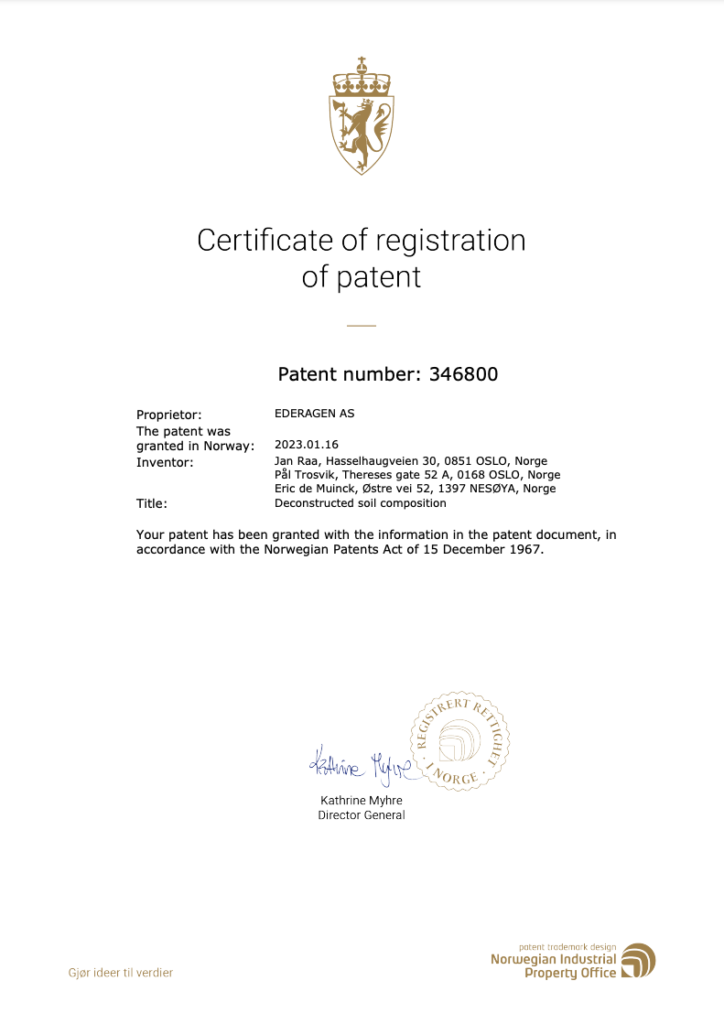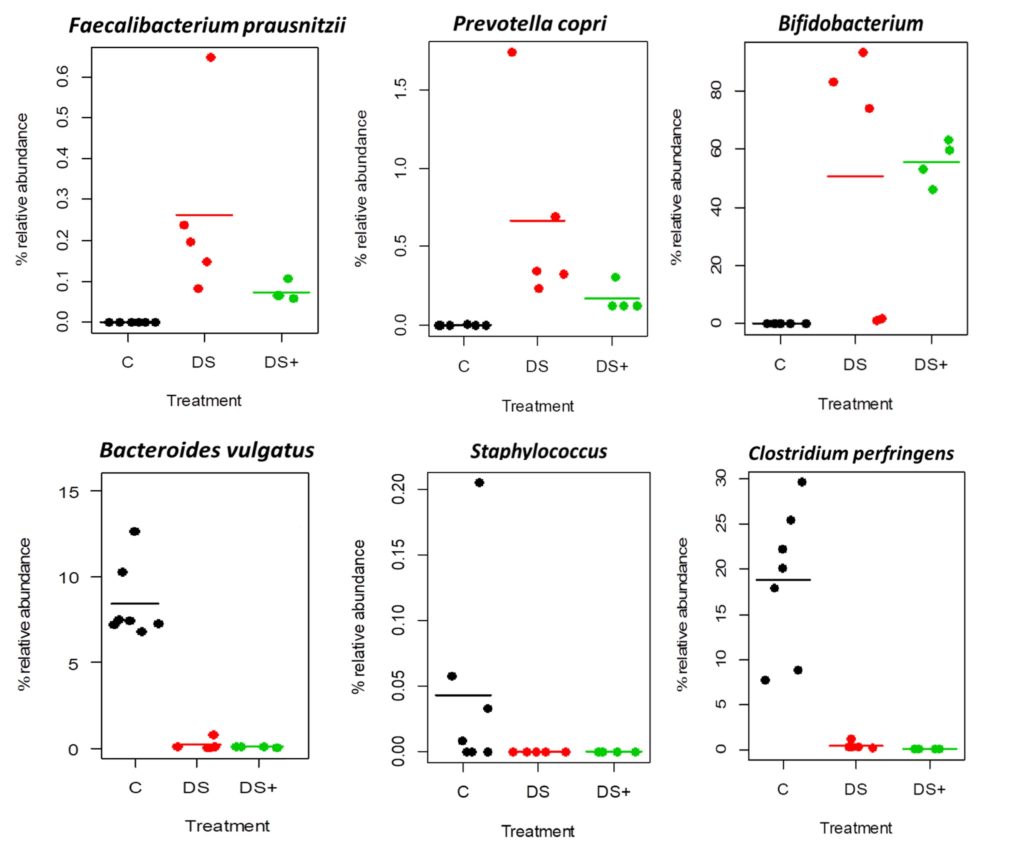
The invention – Deconstructed soil
In early 2023, a Norwegian patent was granted for EderaGen’s invention Deconstructed soil composition. The first deconstructed soil product was launched in the Norwegian market in 2022 under the registered trade name EderaGard®, available here.
As a novel and unique concept, deconstructed soil has redefined the basic principles of regulating the gut microbiome. Deconstructed soil contains undigestible polymers with the same basic composition and structure as certain components in old, black forest soils. The product is dubbed an ecoceuticum because it affects the ecology of complex bacterial communities in an entirely different way than other products. It consists of naturally occurring biopolymers providing no nutrients for microbial growth (as in prebiotics) and no live bacteria (as in probiotics). But when added to a complex microbial community, such as the gut microbiota, beneficial species are supported while unfavourable ones are suppressed. More specifically, it favours acid producing and anti-inflammatory gut bacteria such as Faecalibacterium prausnitzii, Ruminococcus sp., Prevotella copri, Akkermansia municiphila and Bifidobacterium species, while – at the same time – supressing pro-inflammatory and potentially harmful ones, such as Bacterioides vulgatus, Staphylococcus sp. and Clostridium perfringens. This was a discovery that could not be predicted even by the most skilled people in the art and has therefore been granted patent-protection. International patent applications are also pending, in Europe, the Americas and Japan.
The ecoceuticum concept has its intellectual origin in basic ecological thinking, inspired by the well-known phenomenon that humans – especially children – and all animals have an irresistable urge for eating soil. What is it in soil they are craving for? Compositions with properties as of deconstructed soil are a likely answer.
The human race has become adapted to exposure to natural soils throughout evolution. But ingestion of soil in industrialized areas is not recommendable, firstly because the components with a composition corresponding to deconstructed soil constitutes only a small fraction of natural forest soil. Secondly, and more important, environmental contaminants like heavy metals, herbicides, parasites, pathogenic microbes and antibiotics resistance genes, are non-deniable hazards. But it is not necessary to revert to lifestyles of times long past to get exposure to natural soils. Instead, an advisable alternative is the ecoceuticum deconstructed soil (EderaGard®), which safely compensates for the lack of natural exposure to natural soils.
The ecoceuticum concept designed by EderaGen suppresses inflammation and enhances energy redistribution among microorganisms in the gut, creating an “inner soil” (deconstructed soil) in which also the most vulnerable, oxygen sensitive gut bacterial species can grow. This is of critical importance for any product intended to improve gut health, since loss of oxygen sensitive (strictly anaerobic) species is the common denominator of microbial dysbiosis in all western life-tyle diseases. The ecoceuticum acts in harmony with the host’s evolutionary history, restoring the ecological balance in the microbial ecosystem in the gut in favour of anti-inflammatory species lost in modern human societies Being strikingly different from both probiotics and prebiotics, it was at the time of this discovery – and still is – beyond the imagination even of skilled professionals in microbiology that naturally occurring biopolymers providing no energy or nutrients for microbial growth, will favor some bacterial species and disfavor others in a microbial community like that of the human colon. Now that this has been demonstrated, it is expected that the ecoceuticum concept will emerge as a new paradigm for gut health products designed to balance the gut microbiota.

Three examples of increased relative abundance of gut bacterial species generally regarded beneficial (top in all charts) and of decreased relative abundance of potentially dangerous species (bottom) in the presence of two varieties of deconstructed soil (DS and DS+), as well as control (C).


